Honor Magicbook 14 Notebook Review: Where Style Paints a Picasso
by Dr. Ian Cutress on May 15, 2020 9:00 AM EST- Posted in
- Laptops
- AMD
- Notebooks
- Zen
- honor
- Picasso
- MagicBook
- Magicbook 14
- Ryzen 5 3500U
Turbo, Power and Latency
Turbo
As part of our usual test suite, we run a set of code designed to measure the time taken for the processor to ramp up in frequency. Recently both AMD and Intel are promoting features new to their processors about how quickly they can go from an active idle state into a turbo state – where previously we were talking about significant fractions of a second, we are now down to milliseconds or individual frames. Managing how quickly the processor fires up to a turbo frequency is also down to the silicon design, with sufficient frequency domains needing to be initialized up without causing any localised voltage or power issues. Part of this is also down to the OEM implantation of how the system responds to requests for high performance.
For our Honor Magicbook and the Ryzen 5 3500U, we get a base frequency around 1200 MHz, and within 2 milliseconds the system shoots up to a fast 2750 MHz. This is not the final turbo, as it requires another 10 milliseconds going through several frequency stages to finally get to a 3.7 GHz turbo frequency. Overall, from idle, we measured just under 13 milliseconds, which coincides with a single frame at 60 Hz. This is usually the target for user-level responsiveness, so the Magicbook gets a pass here.
Power
As part of my new test suite, we have a CPU power wrapper across several benchmarks to see the power response for a variety of different workloads. First workload up is a heavy AVX-related workload.
The CPU power sits around 1 W at idle, and then goes up to a peak of 13 W, before sitting down to 11 W for the rest of the test. So despite the 3500U being a 15 W processor, Honor has configured the CPU here to only hit 13 W at turbo then 11 W in a sustained test. The sustained part of that turbo isn’t that long, only about 10 seconds or so.
Another AVX test is LINPACK, and here we see the same thing – a turbo up to 13 W and the rest of the test goes to 11 W. The difference here is that when the periodic test gets to around 200 seconds, the maximum power limit tails off into a 9.5 W power limit, suggesting that there are multiple sustained workload power limits on this device. If you can complete the work in 10 seconds, you get 13 W – under 200 seconds gets 11 W, and beyond that gets 9.5 W.
Our 3DPMavx test here does 10 seconds on, 10 seconds off, repeating - allowing the system to recoup some of the power budget for turbo. It sort of works, as we can see spikes of 13 W later on in the test.
This final test is more indicative of a real workload. This is our Photoscan test, which has four segments, some of which are multi-threaded, single threaded, or variable threaded. Here we get more of a 9.5 W through the full test, with the variable threaded part seeing a lot of variation (one core can’t take the whole budget it seems). Nearer the end we are seeing more spiky behaviour as some of the turbo budget gets returned.
Latency
Our latency test is a simple core-to-core ping pong test, to detect any irregularities with the core design. As this is an AMD Picasso processor, the four cores of a single CCX should offer the same latency to each other.
The chip has a 26-27 nanosecond bounce latency.
As for the cache structure, again, this is a typical Zen+ APU result:



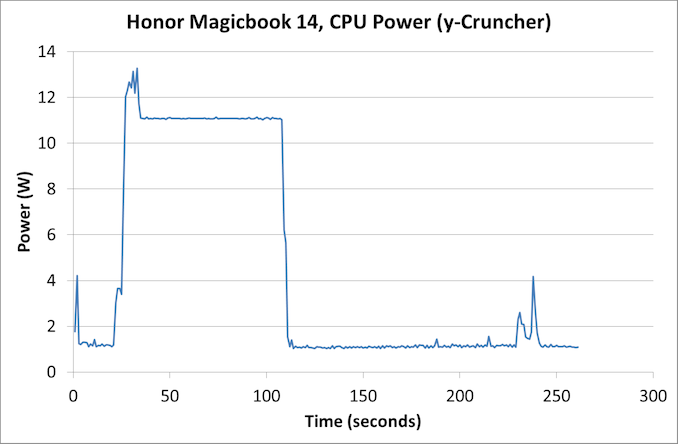
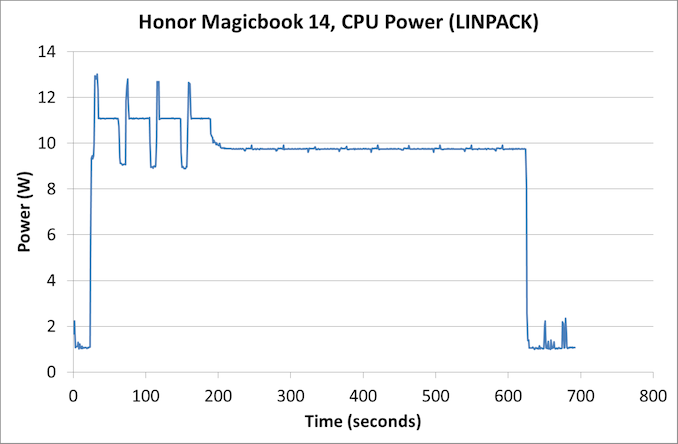
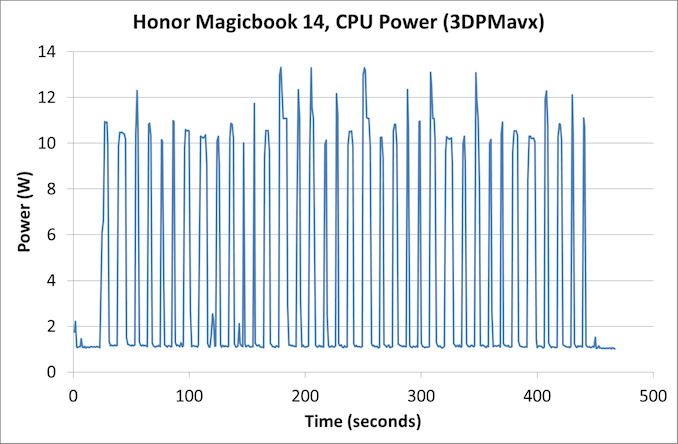
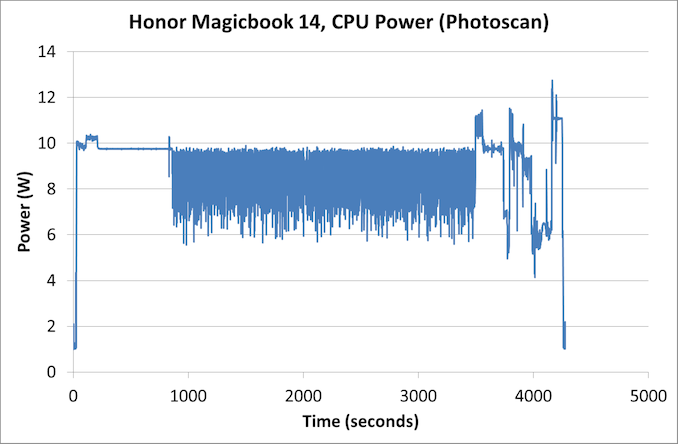

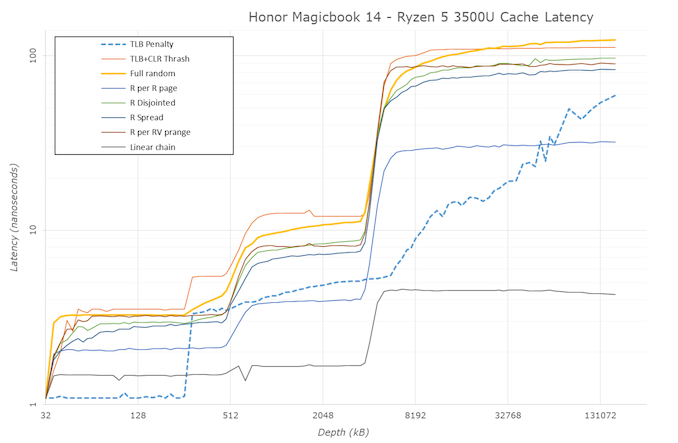








88 Comments
View All Comments
Retycint - Friday, May 15, 2020 - link
Weak battery life and poor budget screen. Not a very enticing deal when you can get the Acer Swift 3with better performance, battery life and the same grade of screen. 1 year too late on this model, I'ma fraidsuperflex - Friday, May 15, 2020 - link
Well this might throw a wrench into things.https://www.zerohedge.com/geopolitical/us-blocks-s...
raywin - Friday, May 15, 2020 - link
hidden key camera is epic!raywin - Friday, May 15, 2020 - link
add one extra USB C and an SD card reader, and I would order this post hastedamianrobertjones - Friday, May 15, 2020 - link
"The keyboard is an attempt to copy Apple’s chiclet design"-Were apple the first to use THIS design?
GreenReaper - Saturday, May 16, 2020 - link
Doesn't matter, they could still be copying it from Apple.Spunjji - Monday, May 18, 2020 - link
Nope, I believe it was Sony.Lord of the Bored - Monday, May 18, 2020 - link
Chiclet keyboards show up in the 70s and early 80s. Commodore PET, TI 99/4 and CC40, IBM PC Jr, Sinclair Spectrum to name a few.They didn't last because they were largely reviled and people wouldn't buy a system without a full-travel keyboard.
Now they are a major feature because they make things thinner and more sci-fi-looking. Go figure.
Findecanor - Tuesday, May 19, 2020 - link
Sony VAIO laptops had the first with modern stable scissor switches with chiclet keycaps on top.The 70's and 80's chiclets were not stabilised.
It is stylistic choice only to make them chiclet. The same switches can be made with trapezoidal keycaps.
gagegfg - Friday, May 15, 2020 - link
The Cinebench R20 MT graphic for the Ryzen 9 4900HS is wrong, its score must be in the order of +3000 points, +50% ...Someone already criticized this score in the review of the Acer Notebook with this CPU.